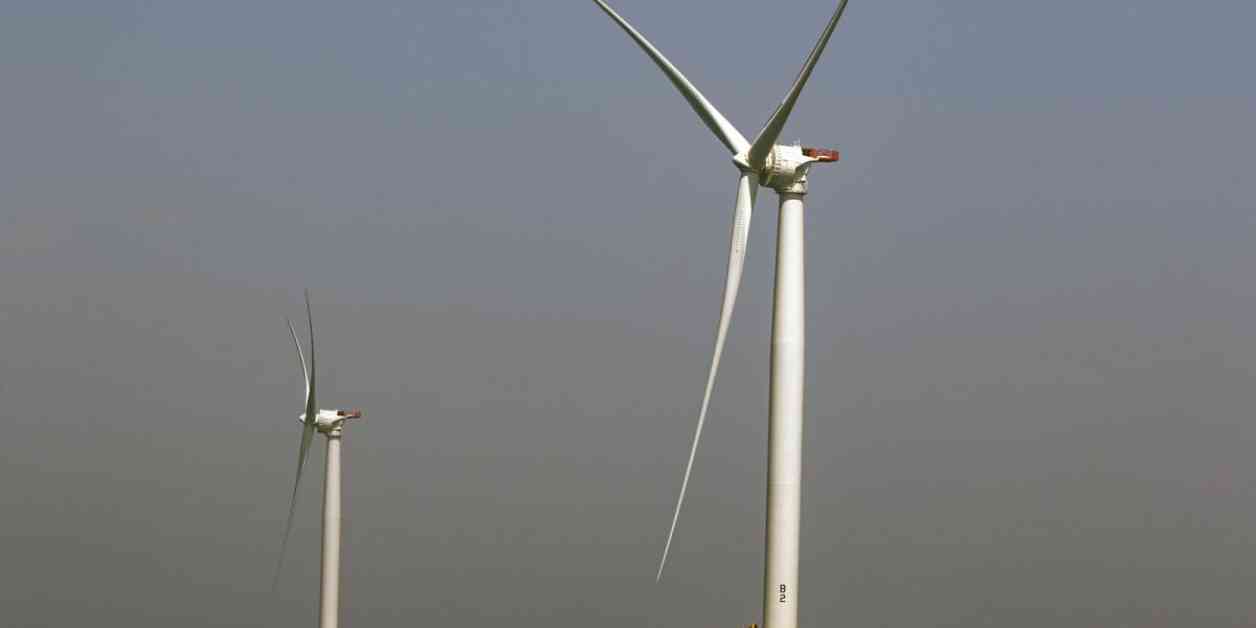Central Atlantic Offshore Wind Lease Sale by Biden-Harris Administration Raises $93 Million
In a significant move towards increasing clean energy production in the United States, the Biden-Harris administration recently completed the fifth offshore wind lease sale. The Department of the Interior disclosed the results of the Bureau of Ocean Energy Management’s wind energy auction for two lease areas off the coasts of Delaware, Maryland, and Virginia. The sale, the first in the region in ten years, attracted two provisional winners and generated an impressive $92.65 million in winning bids.
The success of this lease sale marks a crucial milestone in the administration’s ambitious goal of deploying 30 gigawatts of offshore wind energy capacity by 2030 and 15 gigawatts of floating offshore wind energy by 2035. Secretary of the Interior Deb Haaland emphasized the administration’s commitment to developing a sustainable offshore wind industry that not only meets the nation’s energy demands but also creates jobs and addresses the climate crisis.
Since the beginning of the Biden-Harris administration, the Department of the Interior has approved nine commercial-scale offshore wind projects, held five offshore wind lease auctions, and facilitated the establishment of Wind Energy Areas in various regions across the country. These efforts have resulted in the approval of over 13 gigawatts of clean energy from offshore wind projects, enough to power nearly 5 million homes. Moreover, the administration has prioritized initiatives to support workforce training, strengthen the domestic supply chain, and engage with stakeholders to ensure responsible offshore wind development.
Lease Sale Winners and Lease Details
Equinor Wind US LLC emerged as the provisional winner of Lease OCS-A 0557 with a winning bid of $75,001,001. This lease area covers 101,443 acres and is situated approximately 26 nautical miles from Delaware Bay. Virginia Electric and Power Co secured Lease OCS-A 0558 with a bid of $17,650,500, encompassing 176,505 acres located about 35 nautical miles from the entrance of Chesapeake Bay. A total of six companies participated in the auction, reflecting the growing interest in offshore wind energy development along the East Coast.
Impacts and Benefits of Offshore Wind Energy
The leased areas have the potential to power over 2.2 million homes with clean energy, contributing to the administration’s efforts to transition to renewable sources of electricity. By advancing offshore wind projects, the United States can reduce greenhouse gas emissions, create job opportunities, and enhance energy security. The Biden-Harris administration’s focus on expanding the offshore wind industry aligns with its broader agenda of combating climate change and fostering economic growth through clean energy investments.
The bidding credits generated from the lease sale will facilitate investments in workforce training and the domestic supply chain, promoting job creation and industry growth. Additionally, funds earmarked for fisheries compensatory mitigation underscore the administration’s commitment to balancing environmental protection with renewable energy development. By encouraging collaboration with Tribes, agencies, and communities, the administration aims to ensure that offshore wind projects are implemented responsibly and sustainably.
Economic and Environmental Considerations
The President’s Investing in America agenda emphasizes the role of clean energy in driving economic recovery and resilience. By leveraging private sector investments in manufacturing and renewable energy, the administration seeks to revitalize American industries and create a more sustainable energy infrastructure. The expansion of offshore wind projects not only reduces reliance on fossil fuels but also diversifies the energy portfolio, contributing to a more resilient and environmentally friendly power grid.
In addition to the economic benefits, offshore wind energy offers significant environmental advantages, including reduced air pollution, lower carbon emissions, and decreased reliance on finite resources. By harnessing the power of wind along the Atlantic coast, the United States can decrease its carbon footprint and move towards a more sustainable energy future. The Biden-Harris administration’s commitment to offshore wind development reflects a broader strategy to address climate change and promote renewable energy solutions.
As the administration continues to advance offshore wind projects and expand the industry’s footprint, collaborations with state governments, Tribal nations, and local communities will be essential. By engaging with diverse stakeholders and prioritizing environmental stewardship, the administration can ensure that offshore wind development proceeds in a manner that benefits both the economy and the environment. Through strategic partnerships and transparent communication, the administration aims to build a robust offshore wind industry that serves the long-term interests of the nation.
Future Outlook and Collaborative Efforts
Looking ahead, the Department of the Interior will continue to facilitate offshore wind lease sales and support the growth of the American offshore wind industry. By working closely with stakeholders, including Tribes, agencies, and ocean users, the administration seeks to identify additional areas for offshore wind development and expand renewable energy capacity along the nation’s coasts. Through ongoing intergovernmental collaboration and partnerships with states like Maryland, the administration is laying the groundwork for a more sustainable energy future.
The Biden-Harris administration’s commitment to workforce development, safety, and environmental protection underscores its dedication to responsible offshore wind development. By prioritizing the establishment of a domestic supply chain and fostering industry growth, the administration is positioning the United States as a leader in clean energy innovation. As offshore wind projects move forward, environmental impact assessments and stakeholder engagement will remain critical components of the decision-making process, ensuring that offshore wind development aligns with the administration’s goals of sustainability and climate action.






















